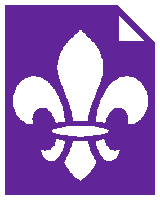Upside-Down Scouting
Scouts Canada’s restructuring focuses on making the membership accountable to the national Board, rather than on meeting the needs of the Scouts
The restructuring in Ontario is described in the February 2002 issue of Burlington District's newsletter, The Link (Scouts Canada, Burlington District 2002). Briefly, districts are being dissolved as of September 1, 2002. The current regions will be divided into "service areas" which will have their own service teams. The Area Commissioner will be appointed by the Regional Commissioner and will appoint Deputy Area Commissioners and a Group Scouter for each group. The management of assets, such as campsites, will be the responsibility of regional staff. The changes are intended to bring "an increased level of servicing and communications" to the groups (ibid:5). The bulletin mentions nothing about how decision making will happen in the new structure. There is no indication that Scouters will have any right to elect, as they do now with the election of their district executive. This structure is very similar to that described in the Millennium Structure report, also called the Fox Report, which was widely rejected by Scouts Canada's membership. The current restructuring has been mandated by the Board of Governors.
This new structure builds on the changes that came about with the passing of Scouts Canada's new governance bylaw in 2000. The bylaw constituted the new Board of Governors to be responsible for the entire national organization. The present changes are an efficient way of dividing up that responsibility into manageable chunks while ensuring that the more local levels of Scouts Canada are ultimately accountable to the Board of Governors. This entire approach to designing a Scout association is upside down.
Rather than starting at the level of a single, national organization and working down a chain of accountability to the local group, a Scout association should be designed starting at with the Scouts' needs (I will use troop nomenclature, though I consider it to include every section). What does a Scout need? A Scout needs other Scouts, so the basic unit of Scouting is the patrol and troop. A successful troop has a good team of Scouters. This team of Scouters must be lead by a well trained and experienced Scouter, who can serve as a mentor for new Scouters.
In order to provide a great Scouting program, the section Scouters need certain things that they can't get on their own. They must have a program with a challenging badge scheme which meets Scouting's educational Mission. There must be well-equipped campsites available. Camporees and jamborees must be held. Well thought out safety rules must guide the implementation of programs. There must be training courses and recognition for Scouts and Scouters who have distinguished themselves. Uniforms, badges, and books must be available for purchase. The program must be insured.
Once we have a list of the services the sections need, then we can figure out the best way to deliver these services. Providing these services is the purpose of the Scout Association; if these services were not required, there would be no need for an association at all.
Many of these services are best provided locally. For example, there should be a local Scouters' Club where section Scouters come together to plan camporees and to learn from each other. While I use the term "services", things like a Scouters' Club are really self-serve.
Other services are best done on a wide scale, probably a national scale. For example, insurance is cheaper if bought in bulk as is the manufacture of uniforms, badges, and books. A badge scheme would be most effective if implemented nationally.
Governance
There are many ways of running a Scout campsite or designing a badge scheme. To ensure that the activities of the Scout association meet the needs of its owners, the membership, the association must be democratic. Democratic means more than that people are consulted before changes are made. In a democracy, the people directly elect some of their own to take on the responsibility of decision-making.
Nothing that I have read about the new structure has said anything about elections or about how the Board of Governors will be made accountable to the membership. The things I have read have focused only on the accountability of local levels of Scouting to the national Board of Governors. Perhaps this silence on the matter of governance is a way of avoiding criticism for a structure that is unacceptable in a democratic society.
Conclusion
Scouts Canada's new structure is focused on making the association accountable to the Board of Governors. It is intended to bring "an increased level of servicing and communications" to the sections. The sections need more than this vague promise. Every section needs to have a skilled team of Scouters who have the resources they need to facilitate a great program. Scouts Canada must be democratic so that it can provide these services. Scouts Canada needs to be restructured by focusing on the needs of the young people. Only by doing this can we hope to reverse our three decade old problem of membership decline.
Reference
- Scouts Canada, Burlington District.
- 2002. "Bulletin #1 Received from Central Escarpment Region" in The Link, February 2002, p.4-5.
